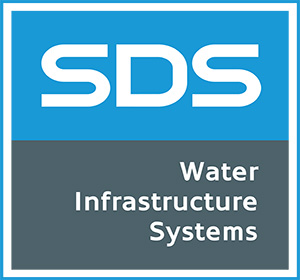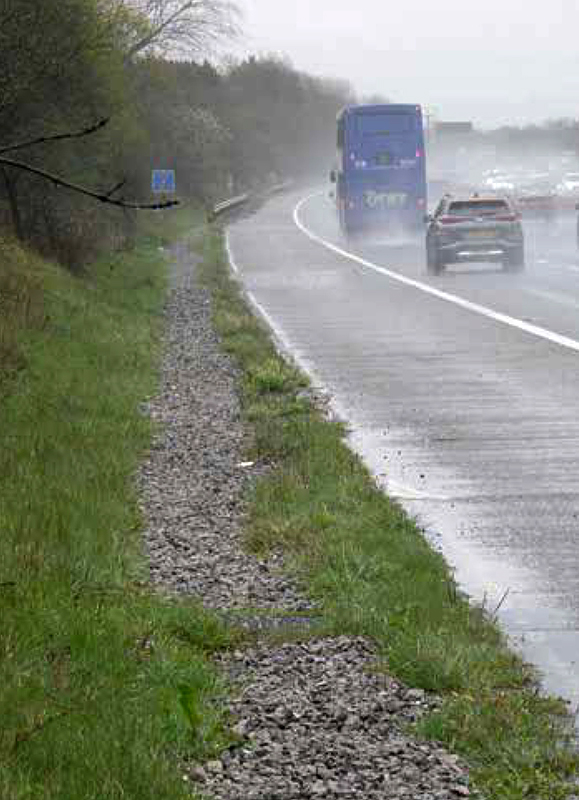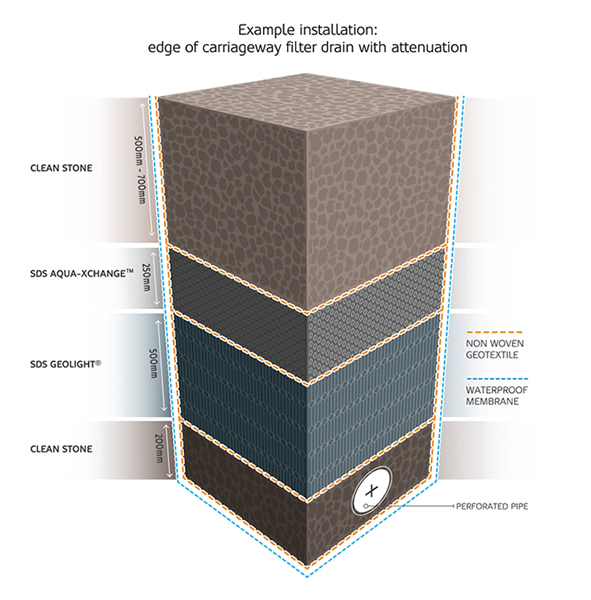When added to the filter drain, a layer of SDS Aqua-Xchange™ uses the processes of adsorption and ionic exchange to capture the metals dissolved in the runoff as they filter through the material. The chemical process forms unbreakable bonds, so the pollutants are retained even in heavy storms and during winter road-salt applications.
BBMM appointed contractors BDB Special Projects Ltd to complete the installation in November 2018. A total of 184 one cubic metre bags of Aqua-Xchange™ were delivered to site by SDS, which BDB set out at seven metre intervals along each side of the carriageway so that the correct volume of material could be applied evenly.
As there were cabled services in the existing filter drain, a vacuum excavator was used to remove the existing stone to the desired 400mm depth. A team followed directly behind to line the trench with a geotextile membrane, then a grab wagon was used to lift and discharge each cubic metre bag of Aqua-Xchange™ material into the trench and it was raked level. The old stone was taken away for cleaning and reuse.
The 250mm layer of Aqua-Xchange™ was covered with a geosynthetic grid for surface stabilisation, then with a final layer of clean stone, designed to capture initial suspended solids and gross pollutants before the water is treated by the Aqua-Xchange™ beneath. The water then continues to percolate through the non-woven geotextile wrap and filters through a further layer of stone before entering the perforated pipe at the bottom of the trench. The cleaned water is discharged into the Mag Brook.







